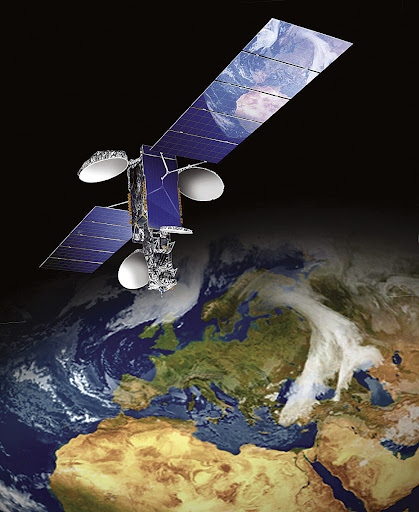To sign up for our daily email newsletter, CLICK HERE
What is a satellite bus? Simply put, it is a distribution network maintaining all service systems of satellites connected to a particular bus. This is the hardcore of the space systems, no matter which particular purpose they serve or in which orbit they are placed. With the space industry growing exponentially and the era of deep space exploration almost upon us, satellite buses have become ever more advanced and complicated. So, let’s take a closer look at the typical satellite bus purpose to discover how this technology works now and what we can expect from it in the future.
Satellite Bus Types & Purposes Explained
So, what is a bus on a satellite, exactly? It is a platform that includes:
- Payload-accommodating trusses;
- Solar panels or batteries to power the platform;
- Any equipment that a spacecraft system may need, i.e., optical sensors, angular meters, control and orientation systems, etc.;
- An on-board computer and a transmitter to relay spacecraft data to a ground station;
- Thermal system to prevent excess heat or cold;
- Engine to adjust the spacecraft position, ensuring the right latitude and longitude;
- A thrust engine for deployment into the calculated orbit.
More complex platforms may also be equipped with life support for crewed missions or guidance and navigation systems for improved maneuvering in space.
The actual type of spacecraft bus will mostly depend on what is a satellite used for, so the equipment may vary slightly from one system to another. When it comes to weight, modern platforms are roughly classified into:
- light (less than 2 tons),
- medium (up to 5 tons),
- and heavy (5+ tons).
Still, the most important parameter of any given platform is how much payload it can carry. However, it does not mean that heavyweight buses can accommodate more payload. Quite on the contrary, lighter platforms have an increased payload to total spacecraft ratio, which is why essential for deep space exploration and successful mission completion.
The primary satellite bus purpose is to reduce spacecraft production costs by using a serial production standard for all spacecrafts connected to a single platform. Besides reducing the production cost, satellite buses also help to reduce production time. As a result, any deployed payload becomes more reliable through repeated testing, and the spacecraft’s lifespan in orbit is increased, too.
Today’s buses are highly versatile and have very few restrictions on the type of payload they carry. These platforms are equally effective for meteorological, communication, research, and Earth Observation satellites. The placement orbit has little effect on the platform capabilities — here, everything will depend on the manufacturer and the clients’ particular needs.
Current Examples of Satellite Buses

The capability and high flexibility of modern satellite buses can, best of all, be seen in the example of currently operational satellite buses. The most prominent ones include:
- Boeing DS&S 702, used in the military defense sector;
- Lockheed Martin A2100, used for communication;
- Alphabus, another telecommunication satellite system placed in the geostationary orbit;
- NASA’s Modular Common Spacecraft Bus, monitoring the asteroids and other near-earth for dangers of collision;
- James Webb Space Telescope bus, serving a whole array of purposes and making use of infrared sensors to view objects that are too far or too cold for Hubble.
Besides, more satellite constellations are deployed today to provide broadband Internet connectivity worldwide, and even more companies are launching satellites that monitor natural disasters, track illegal activities, or ensure more precise navigation on the open seas.
Space Technology Market Predictions
The capabilities of satellite buses are already impressive, but the space industry keeps evolving ever more rapidly. This means that, soon enough, we may observe a noticeable increase in the satellite bus power, applications, and capabilities.
The wide adoption of satellite buses will eventually lead to a decrease in space exploration costs both for commercial and government clients. And, as more and more rocket manufacturers are fine-tuning their reusable rocket technology, the number of launches is expected to grow, but the time span between missions will likely decline.
Right now, governments and private companies worldwide heavily invest in interplanetary and deep space exploration missions, which could potentially lead to increased demand for medium and heavy satellite buses. Today, however, light satellite buses enjoy their moment in the light, taking up almost half of the total satellite bus market. However, despite their compact size, their capabilities, ranging from navigation and control to telemetry and imaging, are very impressive.